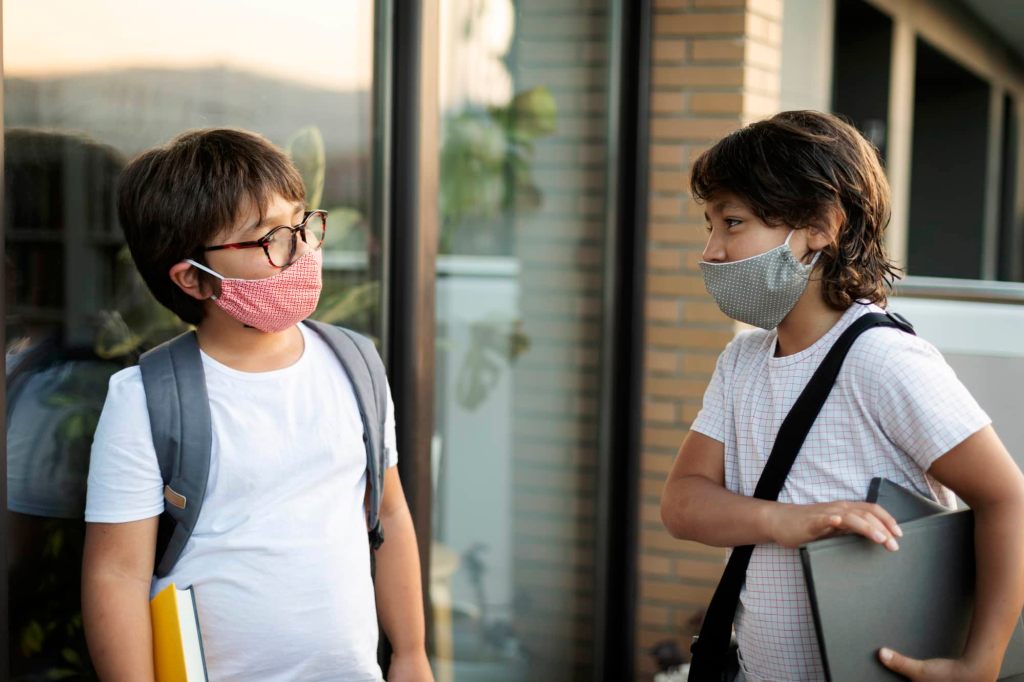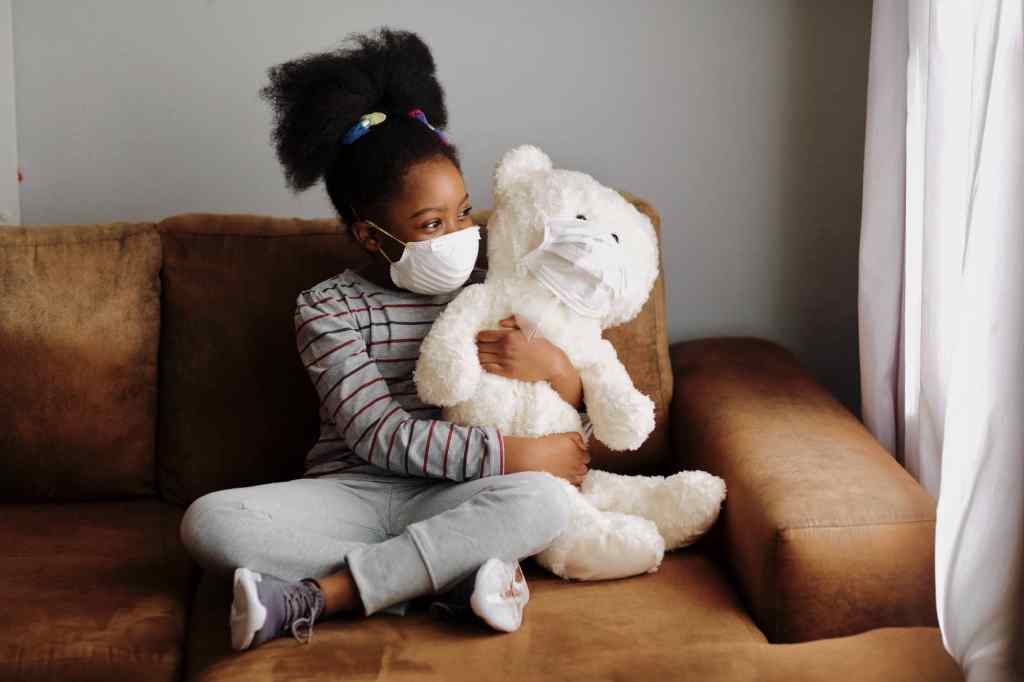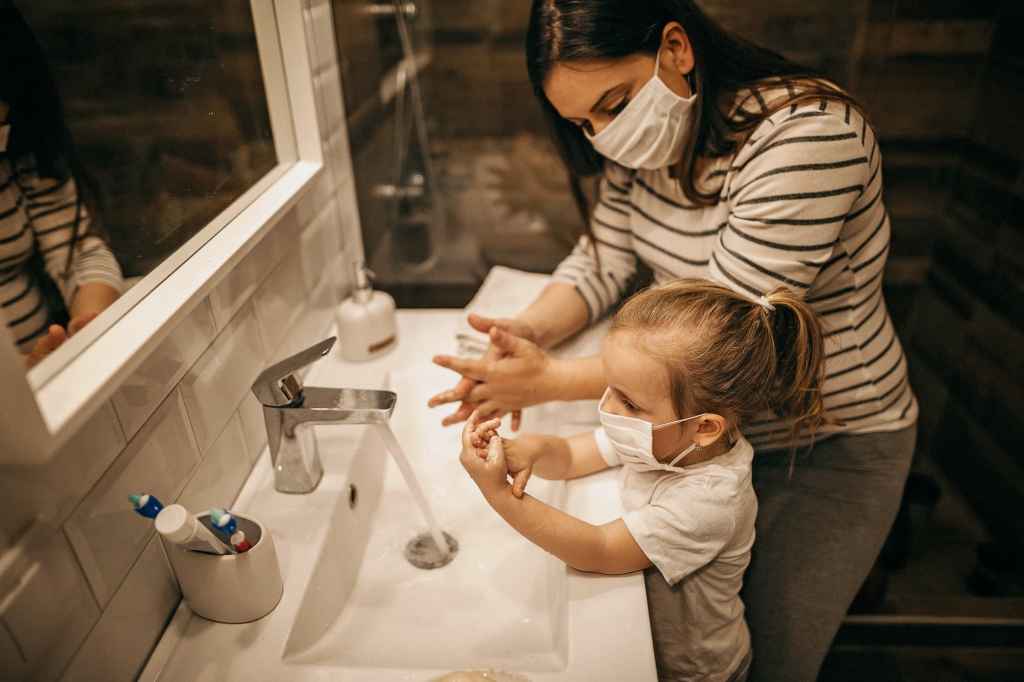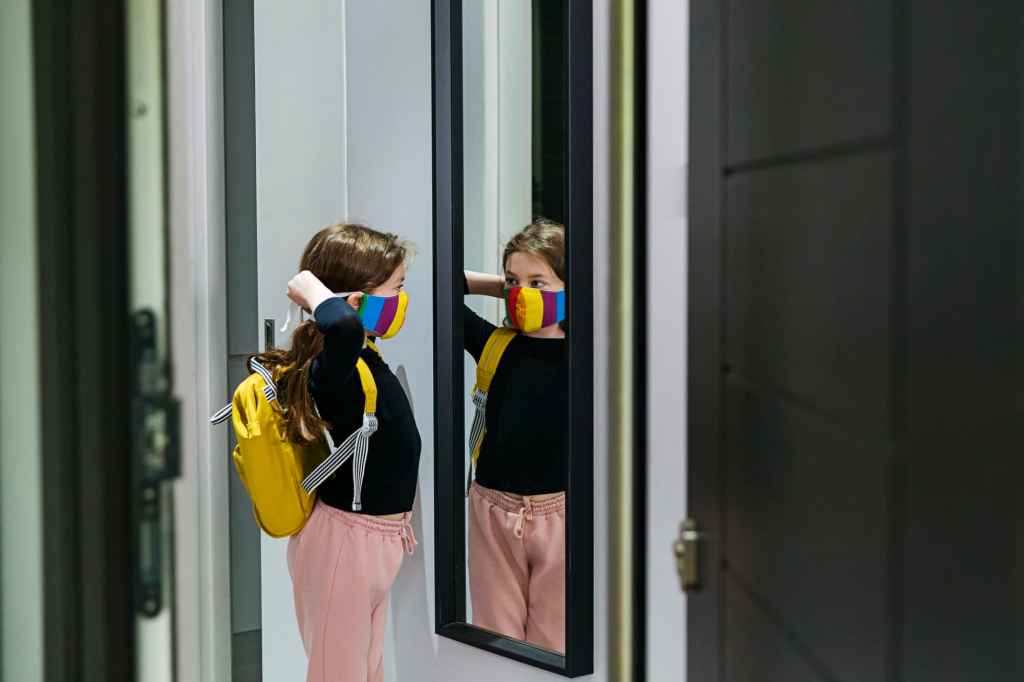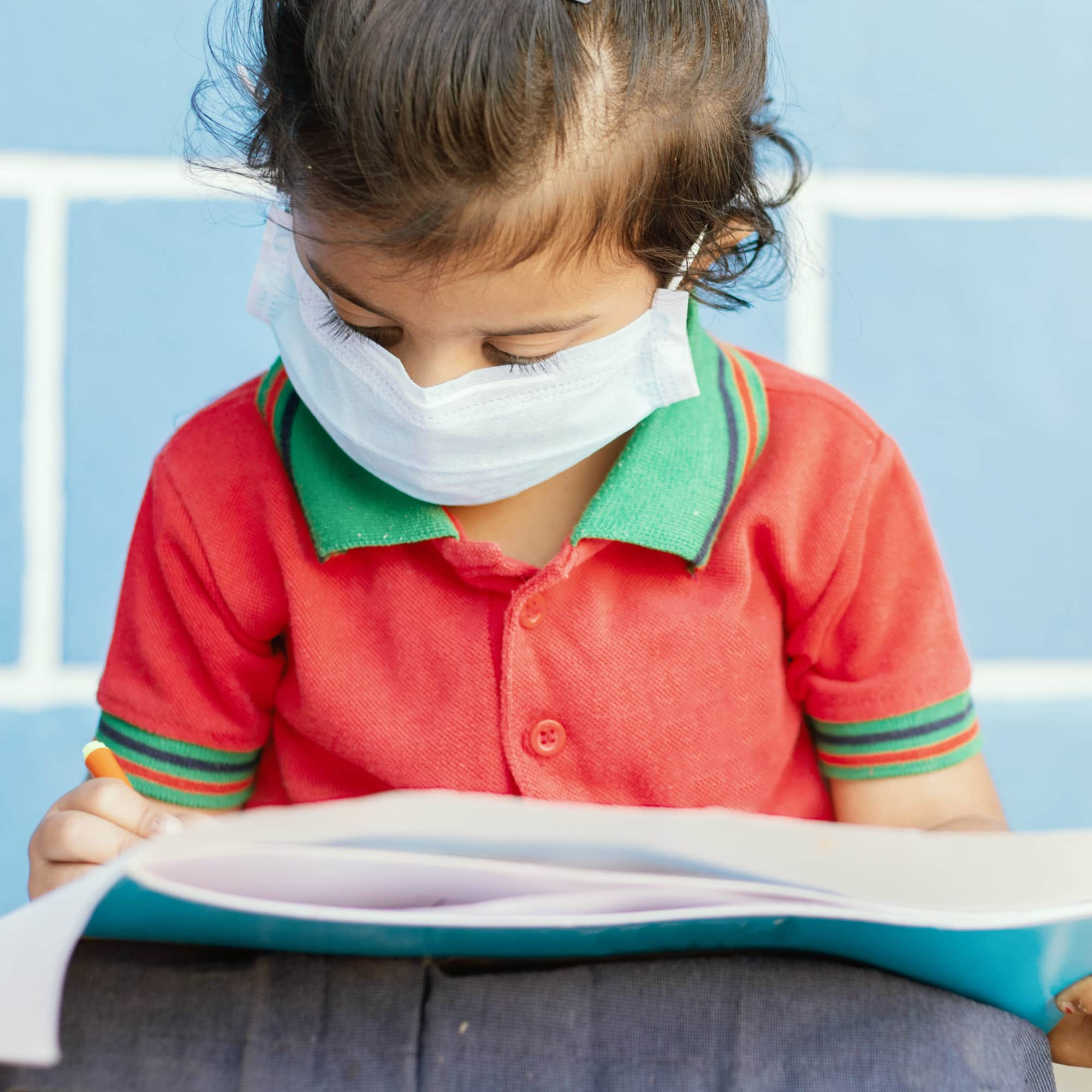
- POPSUGAR Australia
- Living
- How Can Kids Possibly Wear a Mask All Day? This Montessori Teacher Explains
How Can Kids Possibly Wear a Mask All Day? This Montessori Teacher Explains

Of all the objections parents have to the reopening of schools this fall, one of the foundational nonstarters is expecting children to wear masks all day long.
“I’ve seen children who wear their mask without a single complaint for an entire school day. I have seen children who consistently have a hard time keeping it on or clean.”
It’s certainly been a concern of mine, and I’d venture to say my two kids – an upcoming kindergartner and a preschooler – are early adopters to masking. They’ve been wearing masks whenever they leave the house since March, but for the short bursts they wear them at the park, I’m still having to remind one to pull hers up over her nose and I’m still having to bring spare masks for the other, who not even two minutes out of our front door will have sucked on the inside of her cloth face covering so fervently that it’s one giant wet patch.
So, how do we expect kids – particularly those who still haven’t worn one, those who struggle with sensory issues, and those who are, frankly, too young to guarantee even a modicum of consistency – to not simply wear a mask in school all day, but to wear it correctly and safely?
I asked Gretchen Solomon, a teacher at a Montessori school in Chicago, who has been back in the classroom since early July. If anyone understands acutely the struggle with keeping young kids masked, it’s her.
“I’ve seen children who wear their mask without a single complaint for an entire school day,” Gretchen, also a mom to a preschooler, told POPSUGAR. “I have seen children who consistently have a hard time keeping it on or clean.”
Still, she said that with proper guidance and practice, “I know it is possible for children to wear a mask all day.”
Related: What Parents Need to Know About the New Face Mask Recommendation For Kids
How to Find the Right Mask For Your Kids
One of Gretchen’s initial observations was that parents have had a hard time finding masks that fit their children properly.
“First, if your child is having a hard time, just sit back and observe them while they try to wear it,” she advised. “Take a minute to see: Does it fit? Can they take it off and put it back on by themselves? Is the mask covering or bumping up against their eyes? Does it slip down off their nose? Does it fall off their ears or bend their ears? Are they sneezing or coughing a lot more than normal?”
Those are all indicators that it’s a mask issue, and it might be worth exploring different styles of masks with different fasteners and materials, especially for those children who are sensitive to tags, textures, or fabrics.
“Once you have found a mask that fits, if your child is still having a hard time wearing their mask properly, sit down with them and have a conversation,” she said. “You can start by being honest – ‘We are all having a hard time wearing masks. No one likes it.’ Don’t ask, ‘Is it comfortable?’ We all know it’s not. But you can ask, ‘Does it hurt you?’ It may look like it fits but there might be a part that hurts.”
For those who just can’t handle having elastic tugging at their ears, Gretchen found a trick that she’s passed on to several parents already. “Use a hair clip to clip the mask to the hair behind the ears. It’s not a perfect solution, but it helps.”
How to Get Kids to Understand Why They Need to Wear Masks
Even with a mask that fits properly, some kids may refuse to wear it – they are still anxious or uncomfortable at the prospect.
At this point, Gretchen advises parents normalize masks by wearing them themselves and by having a bigger conversation about “the why of it all.”
Gretchen said: “Children love to be heroes and helpers, and children love the idea of fairness. This is a good place to start – we wear our masks to keep ourselves and other people safe. You can talk about how little people can do big things to help. ‘Wearing a mask is a big way to help. It doesn’t help if we don’t do it the right way though.’ If you explain that masks need to stay clean, that is a simple and effective umbrella explanation encompassing all the reasons children can’t leave their masks on the floor, get them wet at the sink, chew on them, or wipe their nose with them.”
Related: You Can Buy Washable Face Masks in Different Patterns and Colors For Kids on Etsy
She also said parents should let kids pick out their own properly fitted masks that cater to their personalities or interests – “they can have multiple masks to go with their outfits or with their favorite characters or colors or matching masks with their friends or family” – and to appeal to their child’s sense of fun.
“Find a way to tie wearing a mask into their favorite game,” she said. “They can pretend that their mask has a special force field around it so they can’t touch it.” Or for those rule-following kiddos, she suggests putting them in charge of “mask checks” for the whole family. “They can inspect and inventory all the family members to make sure they have and are wearing their masks.”
How to Address the Most Common Mask Issues With Kids
Even with all those issues addressed – your child has a mask that fits, and they understand how and why to use it – many kids continue to struggle with wearing masks effectively.
Among her early-elementary-age students, the most common missteps Gretchen has witnessed is touching, tugging, and fidgeting with masks, or even removing them at the moments they need to wear them most.
“I see a lot of kids pulling their masks down below their mouth when they want to speak and then covering their mouth back up when they are done speaking,” Gretchen said. “Children are having a hard time being heard and also understanding what other people are saying. Masks take away our ability to lip-read, which even when there is no hearing loss, is something we all use without being aware.”
She also noted that a quarter of her students suck or chew on their masks. “When children inhale, some masks are sucked in to the point of touching their lips,” she explained. “Once the fabric touches their lips, it’s tempting to stick their tongue out.”
This happens even more with young kids, who have a pre-existing gustatory tendency to explore materials – like toys – with their mouths, but older kids aren’t immune to this habit. “Children who are starting to lose teeth and grow adult teeth often salivate more and may accidentally spit while talking. This will get their mask wet. And to top it off, it’s allergy season, so even without COVID, kids are sneezing and have runny noses.”
Related: These Lightweight Masks For Kids Won't Make You Choose Between Safety and Comfort
Her recommendation is to think of it like brushing teeth – another chore that most kids understand how to do and why to do it, yet it’s still a battle that you have to fight with consistent reminders and supervision until it becomes routine.
In the case of masks, she suggests that each time your child touches their mask, they should wash their hands. “Just like adults, children don’t like to constantly wash their hands, so if they are repeatedly asked to wash their hands each time they touch their mask, they will probably touch it less.”
She also advises modeling, in which parents and teachers practice the same consistent mask hygiene that they are asking of kids: “It goes without saying, but this is true for adults, too, and if we don’t do it, our children almost certainly won’t.”
How to Prepare For School Masking Now
With the start of school still several weeks away, many parents aren’t yet sure if their children will end up setting foot in a classroom or not, but Gretchen urges them to get prepared now for full-day masks if in-person learning is a possibility for their family.
If they only wear masks outside, start having them practice indoors, too.
“See if you can get them to wear it while they watch one episode of their favorite show,” she said. “See if you can get them to wear it while they play for more than 30 minutes. Then gradually build up.”
“The work we put in now to create this important habit will pay off down the road, and sadly, it looks like it’s going to be a long road.”
She also suggests stocking up – particularly for kids like mine who chew or lick their masks – knowing that some days, masks will fall into the sink or get dirty or lost. Sending them to school with at least one spare mask to change into should be standard.
Above all, she stresses trying to make it fun but consistent.
“Establishing a routine can be exhausting as a parent or a teacher,” she said. “Sometimes it is just easier to not have the fight and either do it for them or skip it because who has the energy? But the work we put in now to create this important habit will pay off down the road, and sadly, it looks like it’s going to be a long road.”


